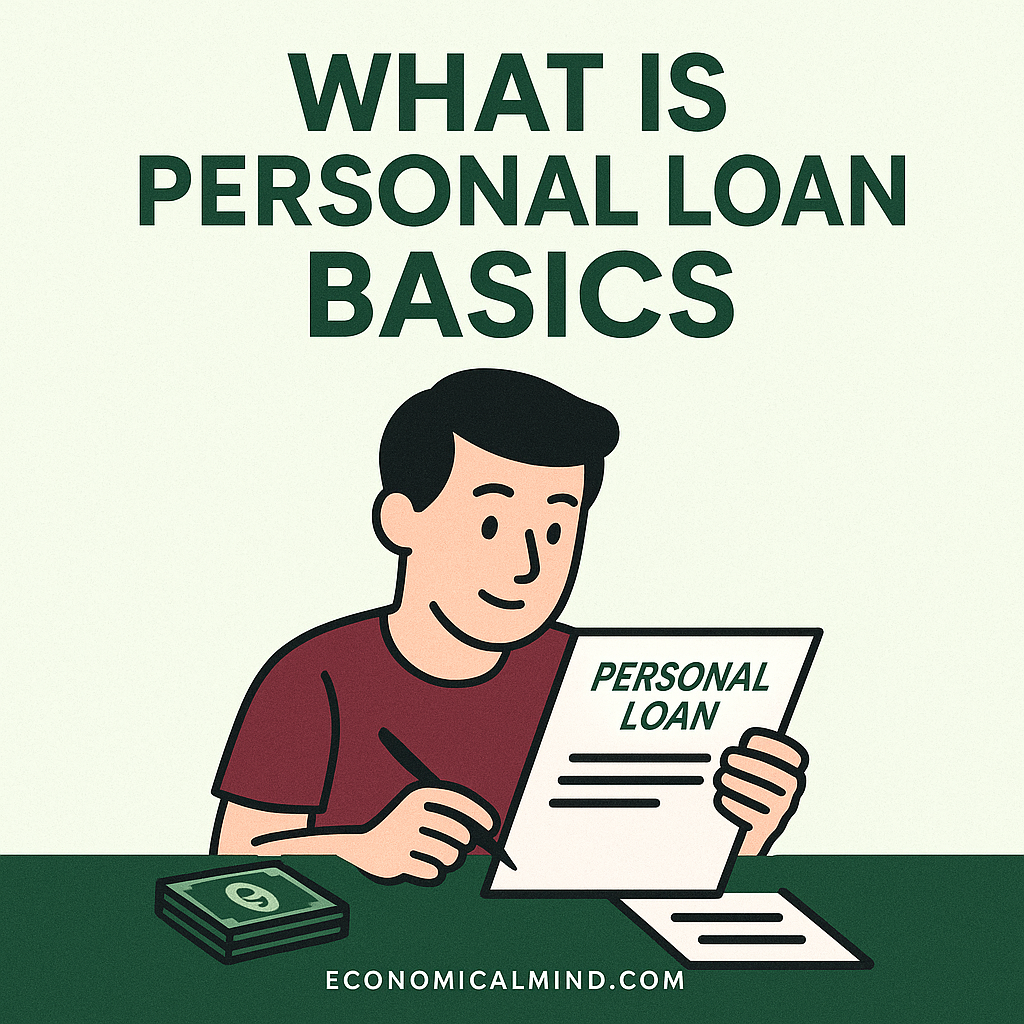
A personal loan can be a powerful financial tool — if used wisely. Whether you need to consolidate debt, fund a major purchase, or handle an unexpected expense, understanding how personal loans work helps you borrow smart and avoid costly mistakes.
What Is a Personal Loan?
A personal loan is money borrowed from a bank, credit union, or online lender that you repay in fixed monthly installments over a set period — usually 2 to 7 years. It’s typically unsecured, meaning you don’t have to put up collateral like a car or house.
Example: You borrow $10,000 at a 10% interest rate for 5 years. You’ll make the same monthly payment until the balance is fully repaid.
Common Uses for Personal Loans
- Debt consolidation
- Emergency expenses
- Home repairs or upgrades
- Weddings or large events
- Moving costs
- Medical bills
While they’re flexible, personal loans should be used strategically — not as a substitute for everyday spending.
Pros of Personal Loans
1. Predictable Payments
You’ll know exactly how much to pay each month until the loan ends.
Example: Fixed payments make it easier to budget long-term.
2. Lower Interest Than Credit Cards
Personal loans usually have lower rates than revolving credit.
Example: Paying off 20% credit card debt with a 10% loan saves significant interest.
3. Can Improve Credit Mix
Having both installment and revolving credit can help your credit score.
Example: A responsible loan record shows lenders you can manage multiple credit types.
4. No Collateral Needed
Most personal loans don’t require you to risk an asset.
Example: Unlike auto loans, you don’t lose your car if you default — though your credit will take a hit.
5. Fast Approval and Funding
Online lenders can deposit funds within a day or two.
Example: Helpful for urgent financial needs like repairs or medical costs.
Cons of Personal Loans
1. Higher Rates for Poor Credit
Interest rates can be steep if your credit score is low.
Fix: Improve your credit before applying or use a co-signer.
2. Fees and Penalties
Origination or prepayment fees can add hidden costs.
Fix: Compare APRs and choose lenders with minimal fees.
3. Temptation to Overspend
Easy access to cash can encourage unnecessary borrowing.
Fix: Borrow only what you need — not the full amount offered.
4. Fixed Terms Limit Flexibility
Once approved, you can’t adjust your monthly payment easily.
Fix: Use shorter loan terms if possible to save on interest.
5. Impact on Credit Score
Each loan application triggers a hard inquiry.
Fix: Apply to multiple lenders within a short window to minimize impact.
Best Practices for Personal Loans
1. Know Your Purpose
Have a clear reason for borrowing — and a repayment plan before applying.
2. Check Your Credit First
Better credit means lower interest. Review your score and fix errors early.
3. Compare Lenders
Online, bank, and credit union offers can vary widely. Compare total costs, not just interest rates.
4. Read the Fine Print
Look for hidden fees, prepayment penalties, and insurance add-ons.
5. Don’t Borrow More Than Needed
Avoid the temptation to “pad” your loan — extra borrowing means more debt and interest.
6. Automate Payments
Set up autopay to avoid late fees and build a positive payment history.
7. Reevaluate After Paying Off Debt
Once the loan is gone, redirect that payment into savings or investments.
Key Takeaway
Personal loans can simplify your finances or make a dream project possible — but only when used with purpose and discipline. Understanding the basics helps you borrow confidently and repay efficiently.
